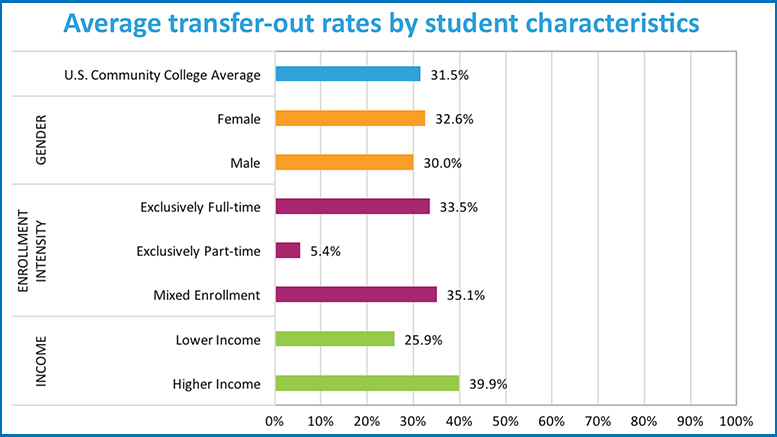Fewer students are transferring from community colleges to four-year colleges and universities, according to a new report from the National Student Clearinghouse (NSC) Research Center.
Out of 852,439 students who first enrolled at a community college in fall 2010, 31.5 percent (268,749) transferred to a four-year institution within six years, the report says. Previously, the transfer rate was 33 percent for the fall 2007 cohort.
“This is surprisingly high, especially given the rising number of local articulation agreements, state-wide transfer policies and low in-state tuition at public four-year universities,” Afet Dundar, one of the authors of the report, said in a release.
Among those 852,439 students who transferred, 34 percent did so after receiving a credential — such as an associate degree or certificate — at the starting school. Forty-two percent of those transfers earned a bachelor’s degree within six years of starting in a community college.
Those baccalaureate completers represent just 13 percent of the original starting cohort, the study said. That’s down 1 percentage point from three years ago.
“While the decrease is small, the direction of the change is not encouraging at a time when community colleges are increasingly viewed as vital access points to higher education,” said Doug Shapiro, the research center’s executive director.
The report noted that some of the change may be attributed to the 2010 cohort having older and more part-time students. In addition, there were some definition changes between this report and previous reports that may result in minor differences in the results.
Breaking it down
About one-third of transfer students from primary academic (32 percent) or primarily occupational (35.8 percent) community colleges earned a certificate or degree before transferring to a four-year institution. Transfer students from rural (34.3 percent) and suburban/town (34.9 percent) community college locations were more likely to transfer after earning a credential than students from urban locations (32.4 percent).
The average completion rate of students who transferred from primary occupational community colleges (43.8 percent) was higher than those who transferred from primarily academic institutions (40.9 percent).
The report also examined transfer and completion based on student characteristics, such as gender, income and full-time/part-time/mixed enrollment.
A study released earlier this week by the Campaign for College Opportunity found that only 4 percent of students intending to transfer between California Community Colleges and the California State University and University of California systems do so within two years. By six years, only 38 percent of students transfer. The study attributed the low rates to a confusing and cumbersome transfer process — despite recent reforms — that is costing students time and money.

